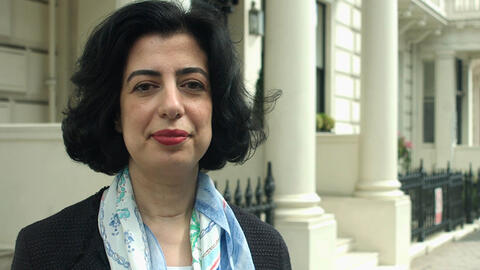
New research from Imperial College Business School demonstrates the link between US exchange rates and the political party in the White House.
This year’s US presidential election sets out two very different pathways for the near-term future. The world is acutely aware of the divide between the candidates and the parties they represent in areas as diverse as the environment, international markets and global geopolitics. However, there are other areas, where the relationship to political viewpoints is less well understood, set to be influenced by the result.
As vital barometers of national economic health, exchange rates are, perhaps, chief among these. Economists instinctively turn to traditional economic models, focused on interest rates and inflation, to attempt to forecast exchange rates, but with little luck. And then, when referendums, legislative changes and elections have an unexpected impact on how rates behave, they find themselves caught off-guard.
Our research helps fill this knowledge gap. Analysing 40 years of data, we found a link between the performance of the US dollar against a large cross-section of foreign currencies and which party is in the White House. Specifically, we found on average that the US dollar appreciates by 4.15 per cent a year during Democratic presidential cycles and depreciates by 1.25 per cent a year during Republican cycles – a difference in average annual exchange rate returns of more than five per cent.
Economics and politics
But what causes this effect? Our analysis compares the US dollar to a range of global currencies, including developed and emerging economies across multiple continents. Instinctively, then, the first place to look for an explanation would be changes in economic conditions – such as interest and inflation rate differences – between the US and those other countries.
However, we found interest and inflation rate changes over time between the US and the other countries did not significantly differ in their explanatory power on exchange rates depending on which party is in the White House. There were outliers, Brazil and Mexico in particular, but these did not affect the overall trend enough to explain our findings.
Economists instinctively turn to traditional economic models... to attempt to forecast exchange rates, but with little luck
The other countries in our analysis do not, of course, sit politically still while the US cycles between Democratic and Republican presidents. Could political changes in those countries contribute to the exchange rate differences we observed?
To check this, we examined whether our findings could be explained by whether centre-right or centre-left parties were elected in some of our comparator countries. Again, we found that local political cycles in those countries had only a negligible impact on the correlation between exchange rate returns and the US presidential cycle.
Global trade policy
Foreign exchange markets are naturally linked to global trade. With this in mind, might differing Democratic and Republican trade policies explain our findings?
Intuitively, we would assume policies favouring international trade (likely to be associated with Democrats) would see an increase in demand for US dollars, while trade policies that are more protectionist (likely to be associated with Republicans) would go hand in hand with a decline in dollar demand.
Our research findings support this argument. In particular, the foreign exchange market views higher US trade tariffs as leading to a greater probability of trade restrictions being implemented by other countries in response. In turn, this has the effect of increasing global trade frictions, which result in US dollar depreciation.
The future of US exchange rates
Our empirical evidence shows that, historically, trade policy has been an important factor contributing to the US dollar’s appreciation under Democratic presidents and depreciation under Republican ones. It’s worth noting, however, that this is not a political statement – in theory, a Republican president who took a position in favour of trade agreements could see a rise in US dollar values, while a Democratic president who took a less favourable position could see a depreciation, breaking the historical chain.
And of course, it remains to be seen whether the trend will continue after this year’s presidential election. Donald Trump has proposed a 10 per cent flat tariff on all imports, with potentially even higher rates for Chinese imports, which our findings suggest would lead to US dollar depreciation.
The US dollar appreciates by 4.15 per cent a year during Democratic presidential cycles
On the other side of the contest, Joe Biden’s policy has, at least in part, been to restrict trade in order to boost internal investment and the US manufacturing sector. If this continues, the Democratic nominee may actually have a similar effect to his opponent on the value of the dollar.
None of this is set in stone, though. A number of Wall Street firms predict Trump’s tariffs will actually boost dollar values, while Biden’s interest in reducing reliance on Chinese imports might see a Democratic shift back towards a more trade-friendly outlook to create the necessary import diversification.
Clearly, there are a number of factors at play, making predictions challenging in a tight race. What we do know is, that over the 40-year period from October 1983 to January 2024, there was a difference in average annual exchange rate returns of more than five per cent between Democratic and Republican presidents – a statistically significant divide. Only time will tell if presidential cycles continue to have this observed impact, and if history really does repeat itself.
This article was published before Joe Biden dropped out of the race for the 2024 US presidential election.
This article draws on findings from "Presidential Cycles and Exchange Rates", by Pasquale Della Corte (Imperial College London) and Hsuan Fu (Université Laval).


